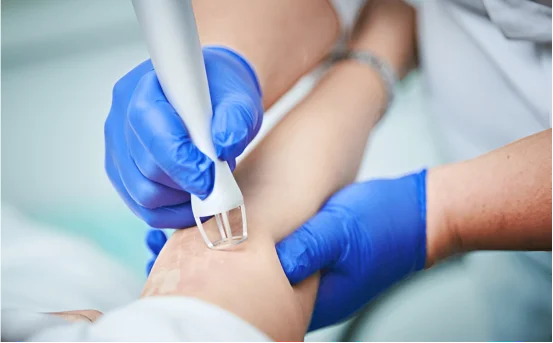Introduction
Laparoscopic appendectomy is a modern, minimally invasive surgical procedure used to remove an inflamed appendix, commonly due to appendicitis. This condition occurs when the appendix a small pouch attached to the large intestine becomes infected or swollen. While the traditional method of appendectomy involves a large incision, laparoscopic appendectomy is performed through a few tiny incisions, offering quicker recovery and fewer complications.
Appendicitis is considered a medical emergency. If left untreated, the inflamed appendix can rupture, leading to life-threatening conditions such as peritonitis or sepsis. Thanks to advancements in surgical techniques, laparoscopic surgery has emerged as a preferred treatment option in many hospitals worldwide, particularly for children and adults with uncomplicated appendicitis.
What is Laparoscopic Appendectomy Surgery?
Laparoscopic appendectomy involves using a laparoscope, a thin, flexible tube with a high-resolution camera and light at its tip. Through small incisions in the abdomen, the surgeon introduces the laparoscope and other tiny surgical tools to view and remove the inflamed appendix without making a large cut.
The procedure typically begins under general anesthesia. Once the patient is asleep, the surgeon creates three or four small incisions, each less than half an inch long. Carbon dioxide gas is then gently pumped into the abdomen to inflate the area and provide better visibility. The laparoscope is inserted through one of the incisions, while surgical instruments are inserted through the others.
The surgeon carefully locates the appendix, detaches it from surrounding tissues, seals the blood vessels, and removes it through one of the incisions. In some cases, especially when the appendix has ruptured or formed an abscess, additional steps may be necessary to clean the abdominal cavity and prevent infection. Once the procedure is complete, the instruments are removed, the gas is released, and the incisions are closed using stitches or surgical glue.
Why It’s Done
Laparoscopic appendectomy is performed when a patient shows signs of appendicitis. This includes abdominal pain (usually on the lower right side), nausea, vomiting, loss of appetite, fever, and swelling. The decision to proceed with surgery is often made after a physical exam, imaging tests like ultrasound or CT scan, and blood work to check for infection.
This procedure is considered effective and safe for most patients. It is especially preferred in children, adolescents, and young adults due to its cosmetic advantage (smaller scars) and faster recovery time. In elderly patients or those with complicated appendicitis (like perforation or abscess), the surgeon may still consider laparoscopic surgery depending on the patient’s overall health and condition.
Benefits of Laparoscopic Appendectomy
One of the key benefits of laparoscopic appendectomy surgery is reduced trauma to the abdominal wall. Since the incisions are smaller, patients experience less post-operative pain compared to traditional open surgery. This means a lower requirement for pain medication and greater comfort during recovery.
Another important advantage is the reduced risk of infection and surgical complications. The minimally invasive approach decreases the chances of wound infections, especially in clean or uncomplicated appendicitis. Additionally, laparoscopic surgery often results in shorter hospital stays. Many patients are discharged within 24 to 48 hours after surgery and can return to normal activities within a week.
Cosmetically, the smaller scars from laparoscopic surgery are far less noticeable than those from open surgery. This makes it a preferred option for younger patients or those concerned about post-operative scarring. Furthermore, the internal visualization with the laparoscope allows the surgeon to examine the entire abdominal cavity. If other issues are found, such as ovarian cysts or hernias, they can sometimes be addressed in the same surgery.
Possible Risks and Complications
Like any surgical procedure, laparoscopic appendectomy surgery carries some risks. These include bleeding, infection at the incision site, or complications from anesthesia. In rare cases, there may be damage to nearby organs such as the intestines or bladder. Sometimes, due to unforeseen complications or severe infection, the surgeon may switch to an open appendectomy mid-procedure.
Patients who are obese or have had previous abdominal surgeries may have a slightly higher risk of complications, although these risks are still lower compared to open procedures. Prompt medical attention and proper post-operative care help minimize these concerns and ensure a smooth recovery.
Post-Surgical Care and Recovery
Recovery from laparoscopic appendectomy surgery is usually quicker and less painful. Most patients are encouraged to walk a few hours after surgery to promote blood circulation and prevent clots. The pain typically improves within a few days and is managed with over-the-counter painkillers.
Patients are advised to avoid heavy lifting or strenuous activities for at least two weeks. Proper wound care is crucial to prevent infection this includes keeping the incision sites clean and dry, and monitoring for signs like redness, swelling, or discharge. Follow-up visits are scheduled to ensure healing is progressing well.
A soft diet is generally recommended during the first few days post-surgery, gradually returning to normal eating habits as bowel movements stabilize. Any nausea, fever, or worsening abdominal pain should be reported to the healthcare provider immediately.
When to See a Doctor
After surgery, patients should stay alert for signs of complications. Seek medical attention if you notice high fever, excessive vomiting, persistent abdominal pain, difficulty urinating, or signs of infection at the incision site. Although rare, these may indicate post-surgical infection or internal complications that need prompt management.
Conclusion
Laparoscopic appendectomy surgery is a safe, effective, and minimally invasive procedure for treating appendicitis. With fewer complications, smaller incisions, and faster recovery, it has become the gold standard in modern surgical care. For patients experiencing symptoms of appendicitis, timely surgical intervention through this advanced technique can prevent serious complications and restore health efficiently.
As with any medical procedure, it is important to consult with a qualified surgeon or specialist to understand the risks and benefits based on individual health conditions. Early diagnosis and prompt treatment remain the key to a smooth recovery and long-term wellness.






















